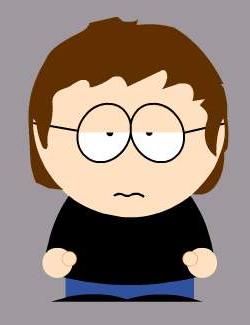Quantum Calculation
Computers have infiltrated nearly every field of business and science, and they keep getting faster. Nonetheless, researchers routinely encounter problems impossible for even the most powerful supercomputers to solve. The remedy could be quantum computers, which would use the fantastic properties of quantum mechanics to crack such problems in seconds rather than centuries. Since the 1980s, physicists in academic labs and at firms such as IBM, Hewlett-Packard, and NEC have pursued a variety of quantum computing approaches, but none seems likely to deliver a working machine in less than 10 years.
Company: D-Wave Systems
Headquarters: Vancouver, British Columbia
Amount invested: $22 million Canadian (about $17.5 million U.S.)
Lead investor: Draper Fisher Jurvetson
Key founders: Geordie Rose, Alexandre Zagoskin, Bob Wiens, Haig Farris
Technology: Quantum computers
Vancouver startup D-Wave Systems, however, aims to build a quantum computer within three years. It won't be a fully functional quantum computer of the sort long envisioned; but D-Wave is on track to produce a special-purpose, "noisy" piece of quantum hardware that could solve many of the physical-simulation problems that stump today's computers, says David Meyer, a mathematician working on quantum algorithms at the University of California, San Diego.
The difference between D-Wave's system and other quantum computer designs is the particular properties of quantum mechanics that they exploit. Other systems rely on a property called entanglement, which says that any two particles that have interacted in the past, even if now spatially separated, may still influence each other's states. But that interdependence is easily disrupted by the particles' interactions with their environment. In contrast, D-Wave's design takes advantage of the far more robust property of quantum physics known as quantum tunneling, which allows particles to "magically" hop from one location to another.
Incorporated in April 1999, D-Wave originated as a series of conversations among students and lecturers at the University of British Columbia. Over the years, it has amassed intellectual property and narrowed its focus, while attracting almost $18 million in funding, initially from angel investors and more recently from the Canadian and German governments, and from venture capital firms. The company plans to complete a prototype device by the end of 2006; a version capable of solving commercial problems could be ready by 2008, says president and CEO Geordie Rose.
The aggressiveness of D-Wave's timetable is made possible by the simplicity of its device's design: an analog chip made of low-temperature superconductors. The chip must be cooled to -269 °C with liquid helium, but it doesn't require the delicate state-of-the-art lasers, vacuum pumps, and other exotic machinery that other quantum computers need.
The design is also amenable to the lithography techniques used to make standard computer chips, further simplifying fabrication. D-Wave patterns an array of loops of low-temperature superconductors such as aluminum and niobium onto a chip. When electricity flows through them, the loops act like tiny magnets. Two refrigerator magnets will naturally flip so that they stick together, minimizing the energy between them. The loops in D-Wave's chip behave similarly, "flipping" the direction of current flow from clockwise to counterclockwise to minimize the magnetic flux between them. Depending on the problem it's meant to tackle, the chip is programmed so that current flows through each loop in a particular direction. The loops then spontaneously flip until they reach a stable energy state, which represents the solution to the problem.
D-Wave's first computer won't be able to accomplish the most widely touted payoff of quantum computing: factoring the extremely large numbers at the heart of modern cryptographic systems exponentially faster than any known computer. It will, however, be ideally suited to solving problems like the infamous traveling-salesman problem, in which a salesman searches for the optimal route among cities. As their complexity grows, such problems quickly become intractable for traditional computers because they require investigating every possible answer. In searching for its own optimal energy state, D-Wave's chip performs exactly this type of calculation automatically, in seconds. Applications--some worth billions of dollars--include optimizing such varied items as truck routes, financial portfolios, and even the layouts of traditional computer chips. D-Wave collaborator Oliver Downs says D-Wave's chip should also excel at modeling other quantum systems, such as the molecular interactions that characterize nanomaterials or drugs.
Although more robust than typical quantum computers, D-Wave's systems will still be delicate. So the firm intends to sell solutions rather than computers, says Rose. A customer will run a program to solve a given problem on its own computers. When the program encounters the "unsolvable" part of the problem, it will remotely call D-Wave's computer to run a subroutine. "For many specialized applications, such dedicated hardware has the potential to be superior to even the most clever software running on a general-purpose computer," says UCSD's Meyer.
And while many approaches to quantum computing have hit a wall, butting up against the limits of lasers and other equipment, Downs believes that D-Wave's early experimental results indicate that its chip is right on schedule. Although Meyer says he can't assess whether the company will meet its self-imposed deadlines, he believes it will succeed in building a machine that can solve exactly the sorts of problems it envisions. "They've employed both very good experimentalists and some pretty serious theory people," he says. "That's certainly the way to approach this kind of problem to make it happen in nonacademic amounts of time."
Company: D-Wave Systems
Headquarters: Vancouver, British Columbia
Amount invested: $22 million Canadian (about $17.5 million U.S.)
Lead investor: Draper Fisher Jurvetson
Key founders: Geordie Rose, Alexandre Zagoskin, Bob Wiens, Haig Farris
Technology:Quantum computers


0 Comentarios:
Publicar un comentario en la entrada
<< Volver